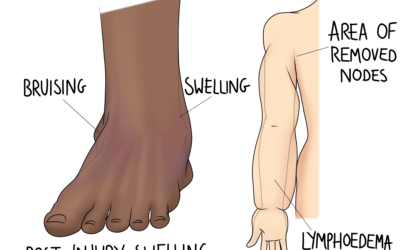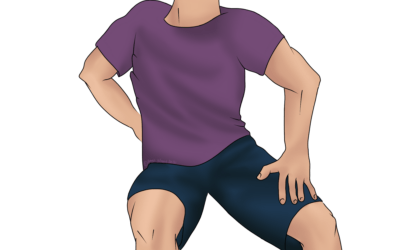My recent post about the magical world of fascia, today I explain myofascial release, how it works and why it can be so successful in treating injuries, pain and core dysfunction.
What is myofascial release?
Myofascial release is a very gentle, no-invasive technique that works directly on the fascia to release tension and adhesions. When fascia is functioning well, it slides and glides, facilitates movement and supports the structure, like the guy ropes of a tent.
If one area is pulled too tight, the structure may unable to support itself fully, with some areas weakening and others being rigid and stuck. Over-use, under-use, injury, inflammation and scar tissue can all cause fascia to solidify, thicken and shorten, becoming restricted, less mobile and tight. As the body compensates, tissues and muscles adapt by over-working, weakening or tensing. One example of this is in a condition such as diastasis-recti. If there is significant tension along the outer abs, the inner abs and connective tissue may struggle to return back together. For pelvic floor injuries such as prolapse, releasing tension or adhesions in the fascia of the pelvis can often help the organs return to their optimal alignment.
As fascia is continuous, adhesions in one area can transfer to other places along the ‘thread’ and cause a distortion in the shape of the tissue (postural patterns) and restriction around the nerves (pain) in much the same way that a snagged jumper can change shape, or show a pull elsewhere in the fabric. Releasing any part of the chain can have a profound effect on the entire structure, allowing the fascia to unwind, regain its elasticity and release the pressure it may be placing on a nerve, organ or joint.
For Optimal Release:
In order to release and unwind, fascia requires the following conditions:
Warmth – ever noticed how bendy you feel after a warming yoga class?
A light touch – fascia tenses under force. The more rapid the force, the more it will thicken.
Gentle, sustained pressure – no pummelling, blasting or elbowing: that will simply cause it to tense even more
Plenty of fluid – it needs to slide and glide, not drag and scrape
Correct application:
Unlike massage, which works by applying rhythmic and mobile pressure to the muscles to increase blood flow and soften the muscle fibres, myofascial release works by applying light pressure to the skin – fascia’s outermost surface – and waiting for a sense of the tissues yielding or changing consistency. Once the fascia has ‘let you in’, applying gentle pressure and allowing the hands or fingers to follow the line of fascia will enable it to release, lengthen and regain its elasticity.
There are many devices and techniques available that claim to release fascia. Using something like a foam roller may provide short-term relief from tightness in the muscles, as it increases blood flow and can mobilise some of the tissues. However, if the casing that runs in and around the muscle (i.e. the fascia) has not released, it’s like trying to squeeze into an item of clothing that’s too tight. Like cornflour solution, fascia yields under gentle and soft pressure, but will solidify to resist force. Pummelling tense shoulders, digging elbows into tight glutes or whizzing up and down on a foam roller to release tight hamstrings are more likely to cause more tension in the fascia, rather than release it.



0 Comments